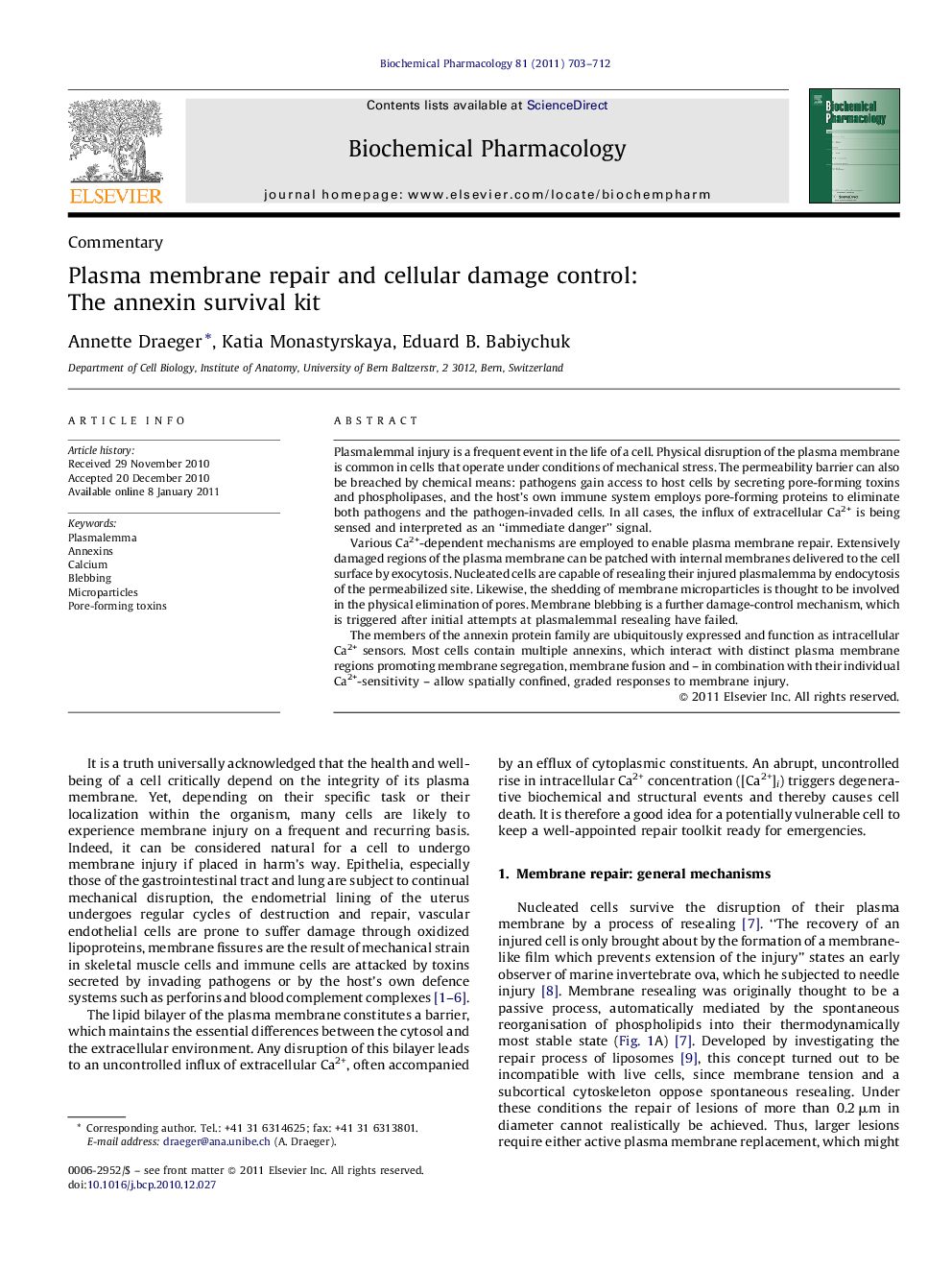| Article ID | Journal | Published Year | Pages | File Type |
|---|---|---|---|---|
| 5823970 | Biochemical Pharmacology | 2011 | 10 Pages |
Abstract
Plasmalemmal injury is a frequent event in the life of a cell. Physical disruption of the plasma membrane is common in cells that operate under conditions of mechanical stress. The permeability barrier can also be breached by chemical means: pathogens gain access to host cells by secreting pore-forming toxins and phospholipases, and the host's own immune system employs pore-forming proteins to eliminate both pathogens and the pathogen-invaded cells. In all cases, the influx of extracellular Ca2+ is being sensed and interpreted as an “immediate danger” signal.Various Ca2+-dependent mechanisms are employed to enable plasma membrane repair. Extensively damaged regions of the plasma membrane can be patched with internal membranes delivered to the cell surface by exocytosis. Nucleated cells are capable of resealing their injured plasmalemma by endocytosis of the permeabilized site. Likewise, the shedding of membrane microparticles is thought to be involved in the physical elimination of pores. Membrane blebbing is a further damage-control mechanism, which is triggered after initial attempts at plasmalemmal resealing have failed.The members of the annexin protein family are ubiquitously expressed and function as intracellular Ca2+ sensors. Most cells contain multiple annexins, which interact with distinct plasma membrane regions promoting membrane segregation, membrane fusion and - in combination with their individual Ca2+-sensitivity - allow spatially confined, graded responses to membrane injury.
Related Topics
Health Sciences
Pharmacology, Toxicology and Pharmaceutical Science
Pharmacology
Authors
Annette Draeger, Katia Monastyrskaya, Eduard B. Babiychuk,
